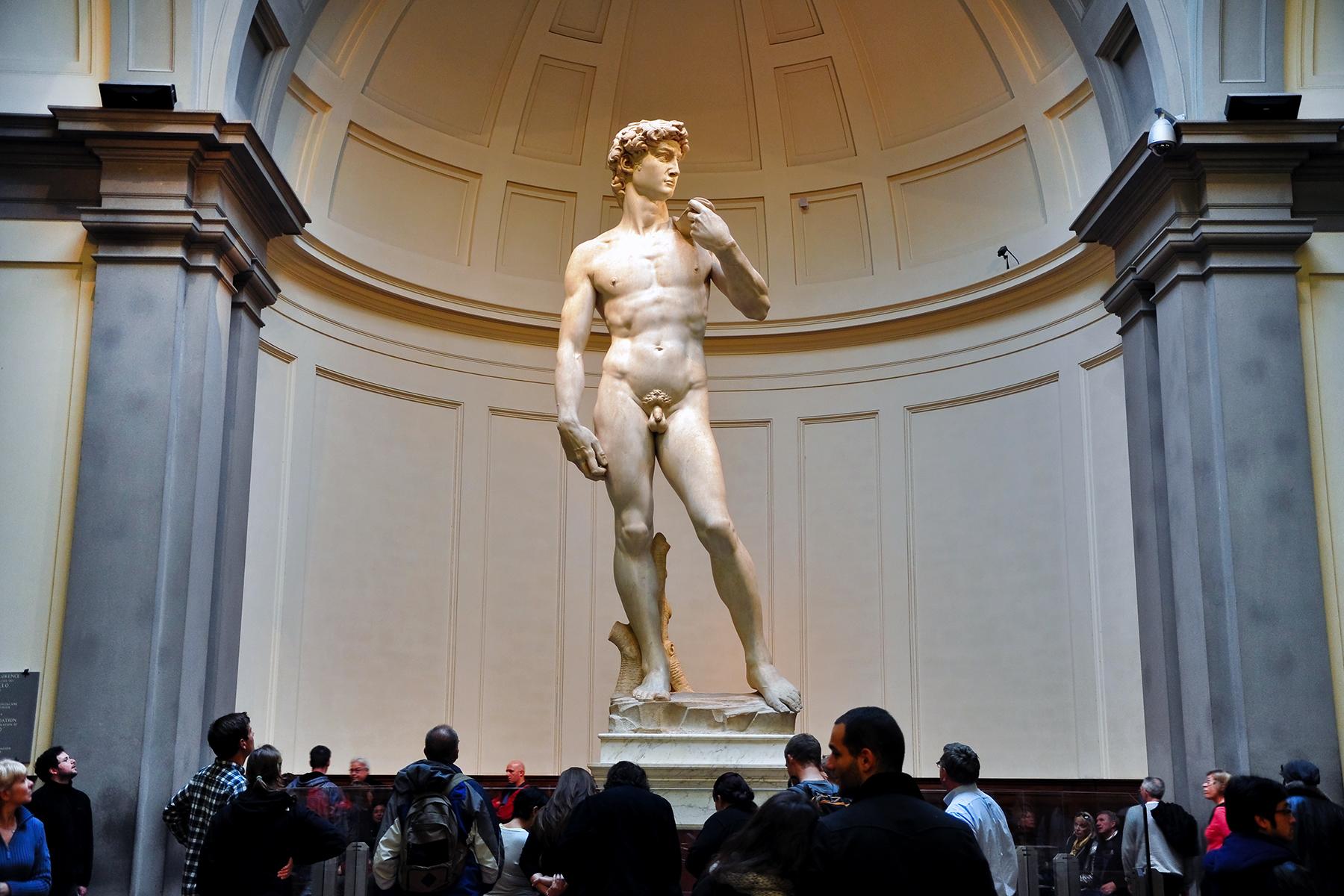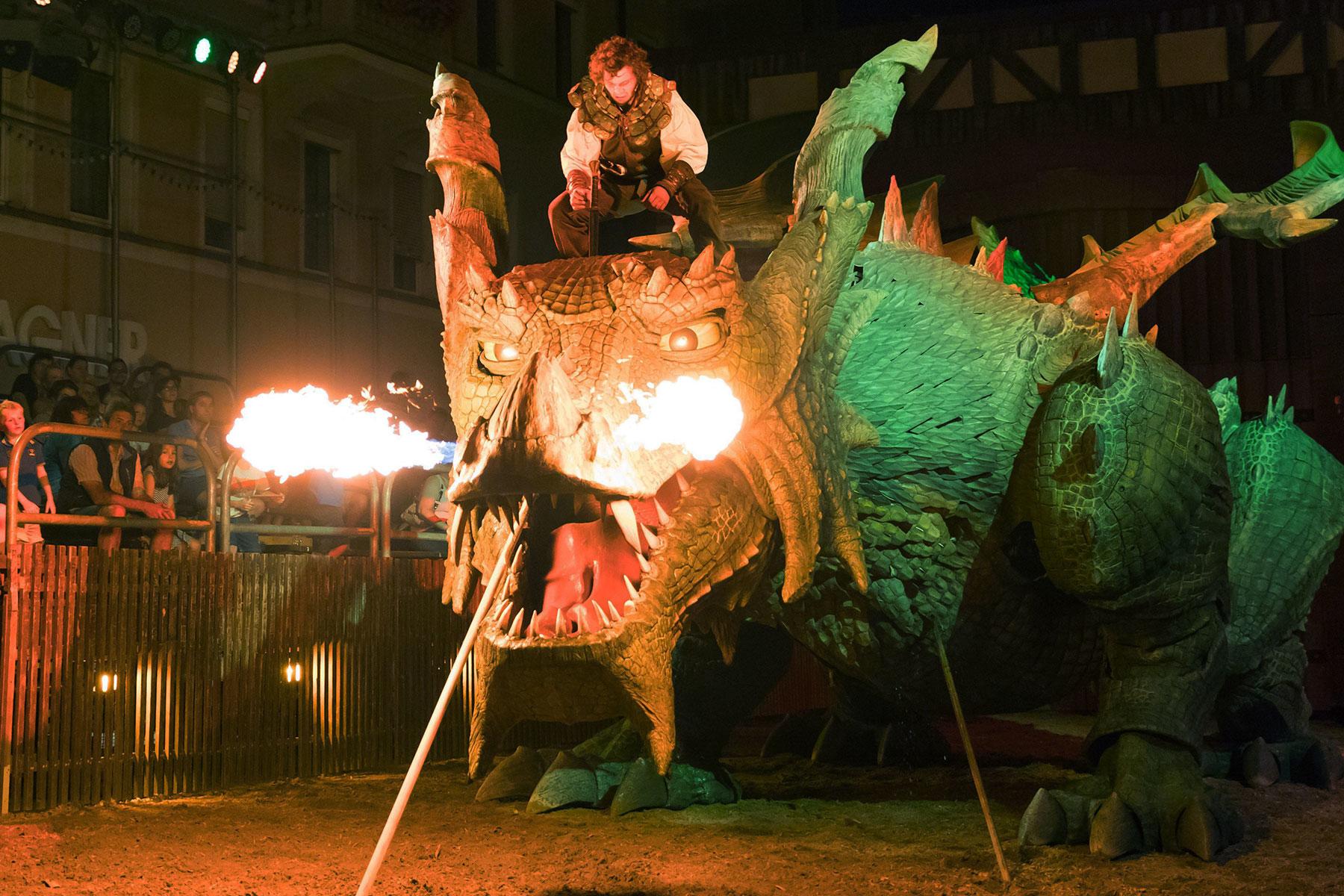The definitive answer to Khalessi’s question, “Where are my dragons?”
Thanks to a certain hit TV show whose main female character is known as the “Mother of Dragons,” the legendary creatures have invaded millions of people’s minds in recent years. But you don’t have to watch Game of Thrones to find them: dragons have played a starring role in the folklore and art of many cultures since the dawn of time. To Europeans, the mythical serpent-like beasts generally symbolized evil and sin due to references to serpents in the Old Testament. To Asians, they were usually auspicious, even celestial. Some experts surmise so many ancients imagined dragons because they saw dinosaur fossils. Others aren’t sure. Regardless, here’s a list of places to hunt dragons and dinosaurs around the world.
Dragon Design
WHERE: Norway
Norway is so crazy about dragons, it named a decorative arts and architecture style after them: dragestil, or “dragon design.” You’ll find dragons as figureheads on Viking ships, gaping dragon jaws on the eaves of medieval wooden stave churches, in wood carvings, in metal jewelry, and in textiles from tapestries to embroidery. In Oslo, find dragon figureheads at the Viking Ship Museum, which has three well-preserved 9th-century Viking longships. Next, see dragon-design textiles inside the hilltop hotel that looks like a fairy-tale wooden castle, Scandic Holmenkollen Park Hotel, which overlooks Oslo Fjord.
Dragons Near and Far
WHERE: China
Historically, the dragon symbolized power, strength, good luck and prosperity, particularly for the Emperor, in China. Dragons, usually portrayed as snake-like with four legs, are everywhere in paintings, sculptures, ceramics, silk robes, from the Nine Dragon Wall in Beijing (a 1756 relief on blue glazed tile) to Suzhou Silk Museum and Suzhou Museum in Suzhou (a half-hour from Shanghai by bullet train). The founder of China’s Han Dynasty even claimed he was conceived after his mother dreamed of a dragon. Five-clawed dragon motifs were reserved for the Emperor (anyone else was punished) and four-clawed dragons for princes and other nobles. Chinese dragons greatly influenced other Asian cultures. In dragon dance at Chinese New Year and other celebrations, a long, ornate dragon prop is held aloft and moved by men holding poles.
Recommended Fodor’s Video
The Saintly Dragon Slayer
WHERE: England
Famous for slaying a dragon to protect a princess, St. George is the patron saint of England, whose flag depicts his emblem, a red cross on a white background. So does the George Cross medal, the highest honor for civilians, established during World War II. The Union Jack, the United Kingdom flag, depicts the St. George Cross over the crosses of Saints Andrew and Patrick for Scotland and Northern Ireland. St. George’s Day, April 23, is a national day, once almost as big as Christmas. England’s biggest celebration that day is at Wrest Park, a country estate and garden near London Luton Airport, featuring a man on a horse holding the St. George flag, shield, and falconry. However, St. George never set foot in the country that so reveres him: Legend says he was a soldier in the Roman army, who hailed from Cappadocia, Turkey.
Red Dragon
WHERE: Wales
A red-winged, four-footed dragon is on the Welsh flag and anything official in Wales. Legend says the Celtic King Vortigern was trying to build a castle in north Wales in Dinas Emrys, but every night, the walls crumbled. Merlin, the wizard, said it was because two dragons slept in the lake beneath the site. Sure enough, after digging, a red dragon and white dragon were found, who promptly began battling each other. The red one won and became a symbol of the Welsh people, as well as a prophecy of the eventual rise of King Arthur. The legendary ruler, the illegitimate son of Uther Pendragon, became King after pulling the sword Excalibur out of the stone. A Dragon and Fairy Festival in southeast Wales whimsically features a costumed “Dragon Whisperer” who shares dragon stories, discusses the “care and management of dragons” (from crucially important tips on surviving your first dragon encounter to housing and feeding), teaches dragon art, and walks a tiny dragon hatchling around the Caldicot Castle grounds.
White Dragon
WHERE: Bhutan
This small Buddhist kingdom calls itself Land of the Thunder Dragon (Druk Yul) because thunder heard in the Himalayas and valleys is actually dragons speaking, natives say. A white dragon clutching jewels is on the Bhutanese flag. White stands for purity, the jewels symbolize perfection and the country’s wealth, the yellow-orange diagonal background represents the power of the King, and the reddish-orange background the power of Buddhism.
Komodo Dragon
WHERE: Indonesia
The world’s biggest lizard is found in the wild only in Indonesia, where Komodo National Park was set up to protect the reptile on Komodo, Padar, Rinca, and 26 smaller islands. The fearsome creature doesn’t sound like it needs much protecting: It can grow up to 10 feet long, consume up to 80% of its body weight in a single meal, eat deer, carrion, and birds, and can attack humans, sometimes fatally.
Dragon Islands
WHERE: Vietnam
Ha Long Bay, an emerald bay dotted with thousands of islands in the Gulf of Tonkin, was formed by dragons who descended from the sky to protect Vietnam from invaders, legend says. The dragons spat out drops of jade that transformed into the lush islands, which are named for their unusual shapes, like elephant or dog. Considered one of the most beautiful spots in Vietnam, the bay, whose name means “descending dragon,” is 100 miles east of Hanoi, which also claims dragon origin. After Emperor Ly Thai To’s dream about a golden dragon who ascended from earth to heaven, he founded Thang Long, now called Hanoi, in that spot in 1010 and made it the capital. A 12-ton statue of the emperor in the Hanoi park named for him points to the location.
Good (and Some Bad) Dragons
WHERE: Japan
Dragons in Japan are generally depicted as long, serpent-like, and wingless, with three-toed claws and often associated with water and rainfall. Tokyo’s oldest temple, Senso-Ji, founded in the 7th century, honors Kannon, the Buddhist goddess of mercy, who descended from the sky in the form of a golden dragon, legend says. After fishermen found a golden statue of Kannon in the river, a shrine was built for the goddess, who then appeared. The temple entrance ceiling is painted with a dragon and lotus flowers, and a Golden Dragon Dance is held twice a year. But Japanese dragons aren’t always benevolent. A nine-headed dragon terrified locals and demanded human sacrifice lived in Lake Ashi, a crater lake with snow-capped Mt. Fuji looming behind it in the Hakone area, until a priest luckily chained it to rocks and calmed it.
Biggest Dinosaur Collection
WHERE: New York City
The world’s biggest collection of dinosaur fossils is at the American Museum of Natural History. You’ll find a rare example of a Tyrannosaurus Rex, one of the biggest and most ferocious meat-eaters who ever lived (up to 12 feet tall and 40 feet long), a 122-foot-long Titanosaur fossil cast, and even an Allosaurus standing up battling a Barosaurus among the 600+ specimens on display. Kids are crazy about dinosaurs, so sleepovers with flashlight tours of the darkened museum are very popular: it’s strictly BYOSB (bring your own sleeping bag) and an adult chaperone is required (it’s just too scary otherwise). But since it wasn’t just kids that made Jurassic Park (movies and book) wildly popular, adults-only sleepovers are also offered, which start with a Champagne reception and live music.
The Real Jurassic Park
WHERE: Utah
The state is a must for dinosaur hunters: fossils of more dinosaur species were found here than in any other state, and it has one of the biggest mounted skeleton collections. At Dinosaur National Monument, you can see over 1,500 fossils embedded in a cliff in the exhibit hall built over the Carnegie Dinosaur Quarry, where fossils of 11 different species from the late Jurassic Era were found. One of the most common is the Utah state fossil, the Allosaurus, a two-footed meat-eater. You can camp where dinosaurs once walked: six campgrounds are in the park, which spans Utah and Colorado. Dino Trekker, a seven-day self-guided tour by car, hits the top spots, from Salt Lake City’s Natural History Museum, which displays the most recent finds, to the Cleveland-Lloyd Dinosaur Quarry, to the St. George Dinosaur Discovery Site, as well as red-rock national parks like Zion and Bryce Canyon.
The Human Dragon-Slayer
WHERE: Germany
Siegfried was the human hero who killed the dragon in the medieval German poem, “The Song of the Nibelungs,” and his story is retold by composer Richard Wagner in Siegried, one of four operas in his “Ring of the Nibelungs” cycle. The dragon was originally a man who murdered his father for his gold. Fittingly, an annual Dragon Slaying Festival has been held for centuries in Furth im Wald, a small town in the Bavarian Forest. Featuring a dragon that’s the world’s biggest walking robot (according to the Guinness Book of World Records) plus locals in historic costumes, it’s considered Germany’s oldest folk play (older than Oberammergau’s famous once-every-ten-years spectacle, also in Bavaria). Even if you miss the August fest, dragon sculptures and paintings are ubiquitous in Furth, and its Dragon Museum houses dragon memorabilia and the fire-breathing dragon that was replaced by the robot.
Dragon Bridge, The Last Labor of Hercules
WHERE: Greece
The greatest hero in ancient Greek mythology, Hercules was given a series of almost-impossible feats to win his freedom by King Eurystheus, after toiling as his servant for eight years. His final task: stealing the golden apples of Hesperides guarded by a 100-headed dragon, Ladon. He slaughtered the beast with his bow and arrows dipped in poison from the blood of Hydra, a nine-headed dragon-like creature he killed in an earlier feat. Hercules is so famous in art, a statue of him slaying the dragon is even in front of Wallenstein Palace in Prague. But then again, the former shipmate of Jason and the Argonauts was always destined for heroism: as a baby, after two serpents crept into his bed to kill him, he grabbed one in each tiny hand and strangled them.
Beloved and Beheaded
WHERE: Slovenia
The dragon is so beloved in Ljubljana, the capital of this country once part of Yugoslavia, it appears on the city’s flag, coat of arms, manhole covers, river walls, and its soccer team’s crest. Four statues of winged, open-jawed dragons guard the bridge over the Ljubljanica River. Legend says the Greek hero Jason and his lover, sorceress Medea, killed the fire-breathing dragon that lived in the river after it set the village that he and his Argonaut warriors built on fire. First Medea cast a spell that put the dragon to sleep, then the dragon’s mouth was clamped shut with chains and his nose stuffed with his victims’ bones. It suffocated and then exploded.
Dragons and Aspiring Dragons
WHERE: Korea
Korean myth refers to three dragons who lived in the sky, the sea, and in mountains on earth. Most dragons began as an imugi, a serpent-like lesser dragon who can achieve full dragon status in various ways (legends say) like catching a flaming orb from the sky or living 1,000 years. One legend says the deathbed wish of King Munmu, a 7th-century ruler, was to become a Dragon of the East Sea to defend Korea. In another, the ailing Dragon King, who lives in a palace beneath the sea, begged for a rabbit liver to save his life. A turtle, who can live on both land and sea, volunteered to bring one back, but the clever rabbit figures out how to survive.
The Eclipse-Causing Dragon
WHERE: Philippines
A huge dragon, Bakunawa, who lived beneath the sea, was prone to swallowing the moon and causing a lunar eclipse. So whenever he tried, natives furiously banged their pots and pans to startle him, causing him to spit out the moon before he swallowed it whole. The mile-long, seven-headed, fire-breathing dragon who terrorized locals once lived in the volcano on Negros island, the story goes. The King was at his wits’ end as the dragon demanded to marry his daughter. Fortunately, a smart young man killed the dragon and married the princess. He did so by enlisting the help of bees, ants, and eagles, who distracted the dragon by flying into its eyes, crawling on and pecking him while enabling the man to chop off its heads.
Tiamat
WHERE: Iraq
Depicted as a dragon, the goddess Tiamat was worshipped in ancient Mesopotamia (Babylonia), now Iraq, as the Mother of All, starting in 1780 B.C. She personified salt water and the god Apsu personified fresh water, and all Babylonian gods descended from their union. Tiamat was killed by the god Marduk, who split her body in two. Her top half became the sky, her bottom half the earth, and her tears resulted in the Tigris and Euphrates rivers, says the Babylonian creation epic.
Dragon Valley
WHERE: Afghanistan
In the Valley of the Dragon, west of the Bamiyan area whose giant Buddha statues were destroyed, a dragon who frightened locals and ate young women and camels was killed by Hazrat Ali, the Lion of Allah and young cousin of the Prophet, legend says. A petrified dinosaur hundreds of feet long resides here. The sound of water flowing underground here in the desert is the dragon growling, locals say.





